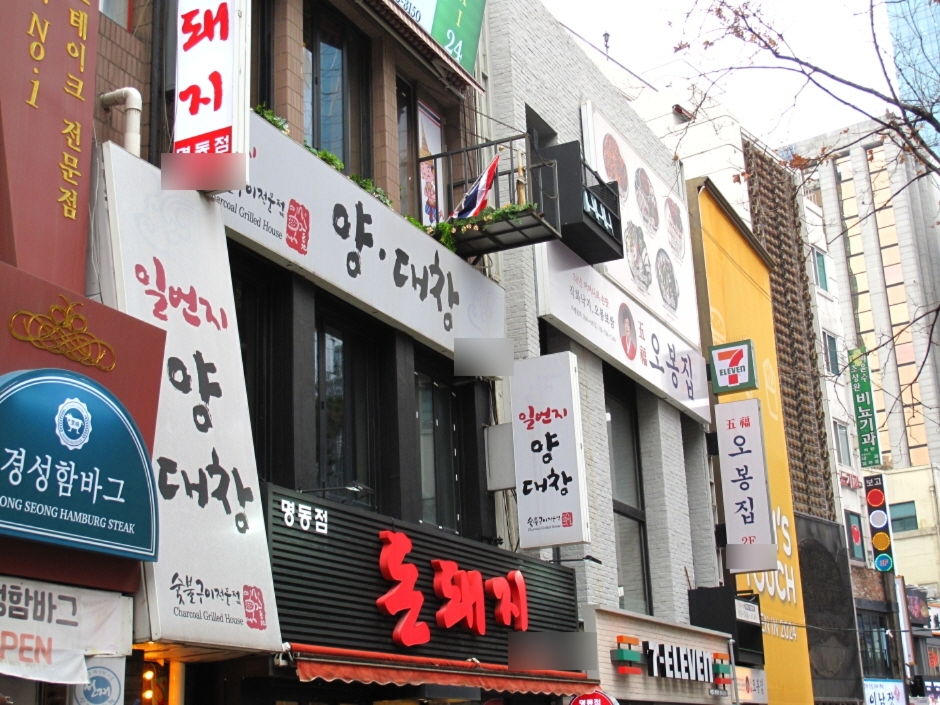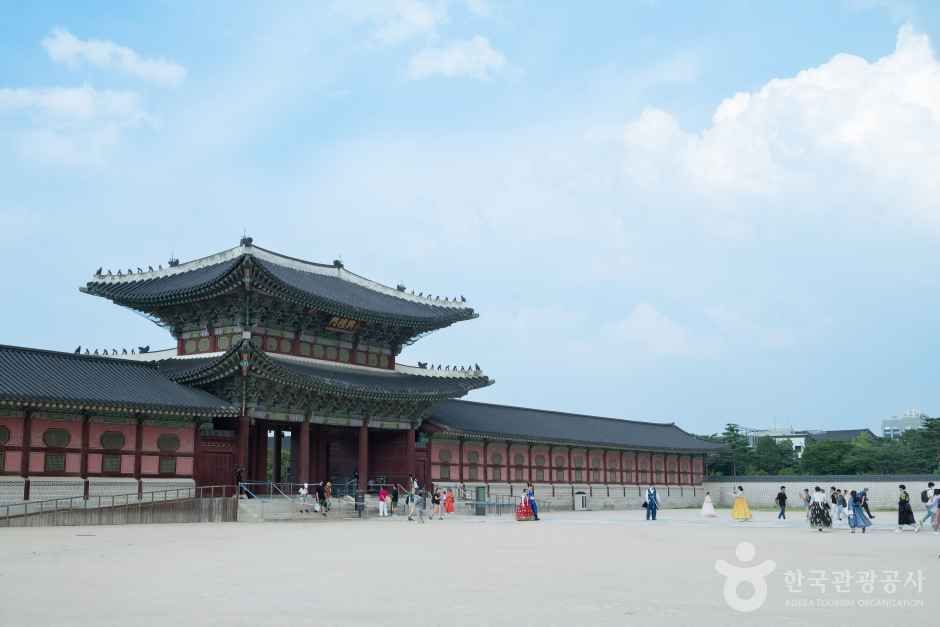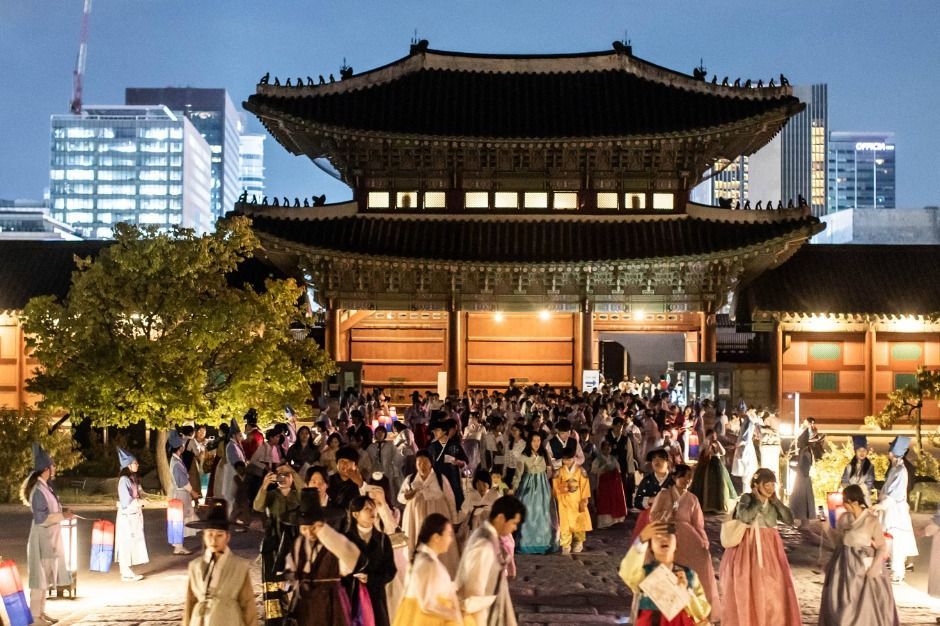Ilbeonji Yang Daechang Myeongdong Branch (일번지양대창 명동)
5.8Km 2024-03-15
2F, 33 Myeongdong 9-gil, Jung-gu, Seoul
+82-2-773-3150
Ilbeonji Yang Daechang is a specialty restaurant for grilled beef or pork small intestines located on Myeongdong Street. Its main menu features various intestines of beef or pork, including large and small intestines, grilled in the Korean barbecue style. Additionally, they offer options like grilled beef and pork galbi, as well as small intestine hot pot.
Samsung Mobile Store SVC - Eulji-ro Branch [Tax Refund Shop] (삼성모바일SVC 을지로점)
5.8Km 2024-04-18
5F, 51, Eulji-ro, Jung-gu, Seoul
-
Gyeongbokgung Palace (경복궁)
5.8Km 2025-10-23
161 Sajik-ro, Jongno-gu, Seoul
+82-2-3700-3900
Gyeongbokgung Palace was built in 1395 as the official palace of the Joseon dynasty by Yi Seong-gye, the future King Taejo and founder of the new regime. Gyeongbokgung Palace is commonly referred to as the Northern Palace because of its location to the north, comparied to Changdeokgung Palace in the east and Gyeonghuigung Palace in the west. Gyeongbokgung Palace is arguably the most beautiful and is the largest of all five palaces. Many Joseon kings were crowned here. The premises were once destroyed by fire during the Imjin War (1592-1598). However, all of the palace buildings were later restored under the leadership of Heungseondaewongun during the reign of King Gojong. The assassination of Empress Myeongseong, however, resulted in Gyeongbokgung Palace losing its function as a royal palace, eventually witnessing the downfall of the Joseon dynasty. Gyeongbokgung Palace retains the original Gyeonghoeru Pavilion, a prime example of Joseon architecture, and the Hyangwonjeong Pavilion and pond. The sculptures in the Geunjeongjeon Hall exemplify Joseon-era sculpture techniques. The west side of the area outside Heungnyemun Gate is occupied by the National Palace Museum of Korea, while the eastern side of Hyangwonjeong Pavilion within the Gyeongbokgung Palace is occupied by the National Folk Museum of Korea.
K-Royal Culture Festival (궁중문화축전)
5.8Km 2025-07-29
161 Sajik-ro, Jongno-gu, Seoul
+82-1522-2295
The K-Royal Culture Festival is held at the five Royal Palaces and Jongmyo Shrine. The festival first began in 2014 and provides visitors with first-hand knowledge of these important cultural heritages through unique performances, exhibitions, experiences and programs. The festival expanded in 2021 to be hosted twice a year, in spring and in fall.
Converse - Myeong-dong Jungang Branch [Tax Refund Shop] (컨버스명동중앙점)
5.8Km 2024-07-01
3, Myeongdong 8ga-gil, Jung-gu, Seoul
-
Jihwaja (지화자)
5.8Km 2024-03-18
125 Jahamun-ro, Jongno-gu, Seoul
+82-2-2269-5834
Jihwaja is a traditional Korean restaurant operated by a successor of Joseon dynasty royal dishes. Their manchan course (full course) includes menus served at royal banquets such as gungjung manchan (royal course), Jineo-byul manchan (deluxe royal degustation course), and janggeum manchan (daejanggeum degustation course) courses. The janggeum course reconstructs dishes from the drama "Dae Jang Geum." For the Jeongchan course (Set menu), they offer so galbi sura (grilled beef ribs course), jeonbok cho sura (braised abalones in soy sauce course), so galbi jjim sura (braised beef short ribs course), and haemul sinseollo sura (seafood hot pot course). Additionally, they serve milk porridge, meat and vegetable skewers, mandu, royal hot pot, and grilled marinated beef.
On The Spot - Myeong-dong Branch [Tax Refund Shop] (온더스팟 명동점)
5.8Km 2024-04-18
37-4, Myeongdong 8-gil, Jung-gu, Seoul
-
Lemon Mart - Myeong-dong Branch [Tax Refund Shop] (레몬마트 명동)
5.8Km 2024-04-17
1F, 45, Myeongdong 9-gil, Jung-gu, Seoul
-
Olive Young - Sindaebangsamgeori Station Branch [Tax Refund Shop] (올리브영 신대방삼거리역)
5.8Km 2024-04-17
113, Boramae-ro, Dongjak-gu, Seoul
-




![Converse - Myeong-dong Jungang Branch [Tax Refund Shop] (컨버스명동중앙점)](http://tong.visitkorea.or.kr/cms/resource/89/3314689_image2_1.jpg)
![On The Spot - Myeong-dong Branch [Tax Refund Shop] (온더스팟 명동점)](http://tong.visitkorea.or.kr/cms/resource/42/2878642_image2_1.jpg)
![Coco Pharmacy [Tax Refund Shop] (코코약국)](http://tong.visitkorea.or.kr/cms/resource/91/2878591_image2_1.jpg)
![Olive Young - Sindaebangsamgeori Station Branch [Tax Refund Shop] (올리브영 신대방삼거리역)](http://tong.visitkorea.or.kr/cms/resource/30/2880030_image2_1.jpg)
 English
English
 한국어
한국어 日本語
日本語 中文(简体)
中文(简体) Deutsch
Deutsch Français
Français Español
Español Русский
Русский